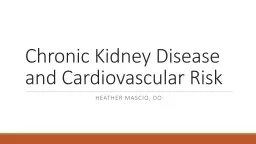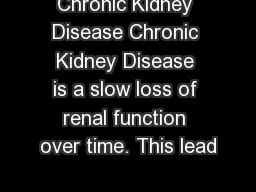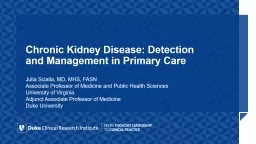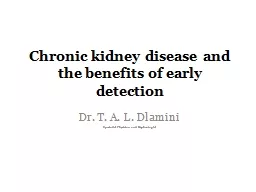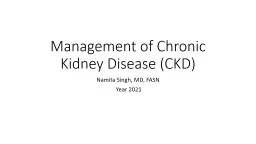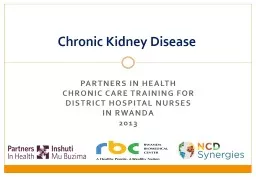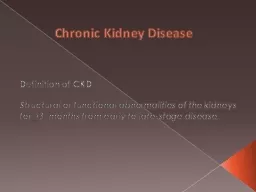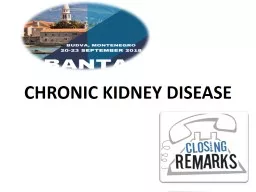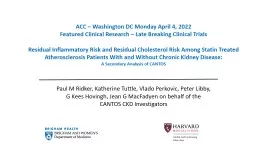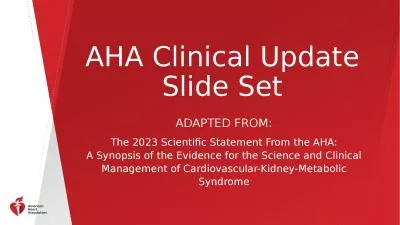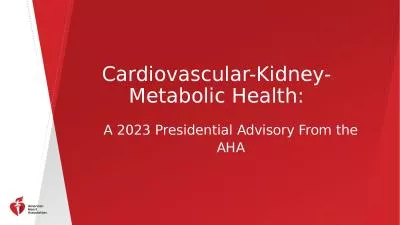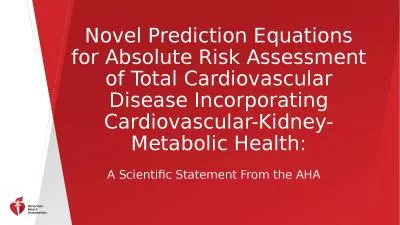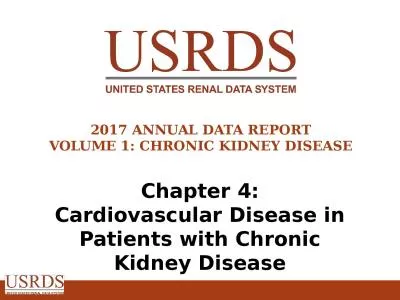PPT-Chronic Kidney Disease and Cardiovascular Risk
Author : Younggunner | Published Date : 2022-08-04
Heather Mascio DO Introduction Chronic Kidney Disease CKD affects around 14 people in the United States Individuals with CKD are 10 times more likely to die of CV
Presentation Embed Code
Download Presentation
Download Presentation The PPT/PDF document "Chronic Kidney Disease and Cardiovascula..." is the property of its rightful owner. Permission is granted to download and print the materials on this website for personal, non-commercial use only, and to display it on your personal computer provided you do not modify the materials and that you retain all copyright notices contained in the materials. By downloading content from our website, you accept the terms of this agreement.
Chronic Kidney Disease and Cardiovascular Risk: Transcript
Download Rules Of Document
"Chronic Kidney Disease and Cardiovascular Risk"The content belongs to its owner. You may download and print it for personal use, without modification, and keep all copyright notices. By downloading, you agree to these terms.
Related Documents

